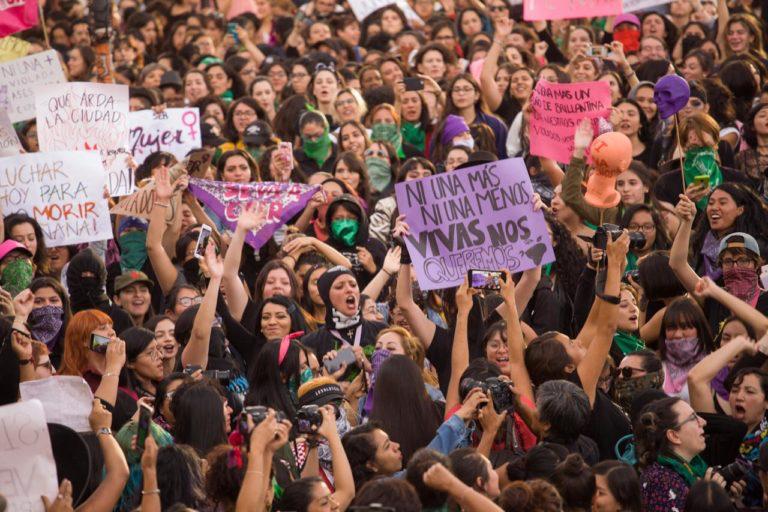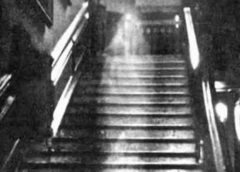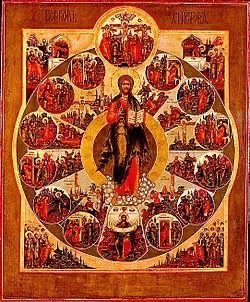Those who have left us are not absent ,they are invisible
St. Augustine. Narrations about the Psalms
The influence of the ancestors is not limited to genetic inheritance, the transmission of habits, or the repetition of behaviors. Important dates, accidents, events, and diseases are repeated by the descendants even when the memory of the predecessor has been suppressed for several generations. Silenced conflicts and hidden stories resurface in the living. By means of psychotherapies employing non-invasive techniques of the conscience the unsolved stagnated conflicts of the dead ancestor are released within the descendant’s mind.
To ignore the past makes us its prisoners. Getting to know oneself requires awareness of the transgenerational elements that constitute the reality of an individual. Ignorance of these structural components prevents the detection of states that are repeated from ancestors to descendants in long intergenerational chains.

New generations are vessels of old unsolved family conflicts that can be identified and transformed in psychotherapeutic sessions of deep relaxation. In these settings, people and spaces that no longer exist in the current world are accessed. Even though these scenes and their actors have physically disappeared, they remain alive in a different dimension closely linked to our reality. The person in a suprasensitive mental state —beyond sensory perception— produced by deep relaxation under the guidance of a psychotherapist, can interact in those scenes suspended in time. Whoever knows its past owns its present.
Ancestors and descendants, living and deceased, remain interconnected. A human being is not only a material body. Beyond the physical body perceived through the five senses, beyond the emotional body and the intellectual body exists a spiritual body composed of several layers; the outmost encompasses the entire physical universe. The spirit is not limited by space or time and supports everything that exists. A fragmented vision considers that matter and spirit are two independent realities; however, they are an indivisible unit. Matter and spirit are interdependent realities.

The spirit does not depend on the material life of a body to exist. Only under certain circumstances it is binded to physical forms but not restricted to them. Life is a manifestation of the spirit, which is the observer of material existence. When a person dies, its information records, the memory of its existence remains active. The limited perceptive capacity of the five senses, and the limited faculties of the rational mind, make the detection of the subtle planes very difficult. However, the fact that we cannot perceive them does not mean they do not exist. Suprasensorial knowledge goes far beyond the limited receptive capacity of the organs of perception and the rational mind.
The information obtained via the extrasensory route is not limited to the present existence. We also have access to the past — not only to ours — and to the future. All human beings receive information about the future through dreams and premonitions; however, not all of them take these warnings from other dimensions seriously, nor do they manage to interpret them correctly. It is also possible to receive information about past lives and beings existing in other dimensions through regression and transgenerational psychotherapies.This information is received through mental voices and images.
Awake or asleep, we are permanently and continuously linked not only to our own past and present but to the past and present of others, including those who have no physical body. Similarly, we remain linked to invisible dimensions, although we are not always aware of them. The present is not reduced to what we perceive with the senses in the here and now but is a complex network of interconnections and exchanges of information between times and dimensions with which we are in close connection and interaction. We are not alone, we do not depend only on what we see, feel, hear, or what we have stored in our memories. We are part of an interdimensional universe in permanent interdependence and communication.

Those individuals who are led into deep relaxation states through non-invasive techniques during psychotherapeutic sessions visualize unknown deceased relatives of whom they never even heard their names or had any reference of. Under the state of relaxation rational and verbal functions characteristics of the brain´s left hemisphere diminish while thought by images, characteristic of the right hemisphere, intensifies. In this state, images allowing knowledge about past events arise. The psychotherapist asks the subject to translate the images into words, to transfer them from an immaterial meditation state to a conscious knowledge, structured through verbal language.
In these sessions, the subject realizes that it is repeating the ancestor’s life. It becomes aware that what it was considering as personal events and fortuitous situations are repetitions of the life events of the deceased relative. Psychotherapeutic work allows the individual to relate to that entity from the past as if it were a physically present person. In these encounters they can see, hear, converse, and even touch each other. A meeting with the ancestor usually generates in the descendant a feeling of completeness in addition to allowing the person to clarify its own existence.
This psychotherapeutic intervention interrupts the transgenerational repetitions because it unties the knots of conflict that kept the spiritual presence attached to the subject’s energy field. Special skills are not required to have access to an experience beyond the perception from the senses, but the guidance of a psychotherapist specialized in the transgenerational method is essential.

It is common for the ancestors who manifest themselves during a psychotherapeutic session to have been rejected by their families for several generations: secret envelops their existences. Their memory however remains active in the untold, in the silence. Rejection is the family response to those who challenge the image that the family wants to portray. Denying a transgressor member and their direct descendants generates less family uncertainty than questioning its own responsibility before the critical event. This denial is a psychological defense mechanism. The rejected ancestor lives on even if its name and deeds have already been forgotten. Since no one dies because only matter can die —the physical body— the spirit of the ancestor perpetuates the state of conflict experienced during its life.
Whatever one resists persists. Whatever one rejects stagnates. Hidden conflicts generate blockings that affect not only the mind and body of a living person, but stagnations that persist even after its death. These energy blockages created by unsolved conflicts are kept waiting for a solution, regardless of the time elapsed between the individual’s death and the present time. Commonly, the rejected ancestor reflects the unsolved issue in a descendantwho will manifest it through various physical and psychological pathologies. During its lifetime the descendant will repeat events similar to those experienced by its ancestor with whom it maintains an energy and spiritual bond by affinity.
Suicide is an extreme case of conflict that tends to be silenced for generations; it is an event that cannot be singled out or isolated from the psychosocial dynamics of the family group. The suicidal individual is the group emergent who shows through its decision the severe issues that the family prefers to reject rather than analizying itself and proceeding to a honest correction. As a mechanism to protect the state the family wishes to preserve, the suicidal member is condemned to oblivion. Its name is no longer pronounced and silence and marginalization also reach its children. Even though the original events and the person’s name remain hidden in the greatest secret, the crisis echoes on through several generations. Oblivion does not solve the conflict; on the contrary, it exacerbates it.

The unsolved conflict generates an energy state that could manifest itself in a descendant, causing psychological and physical symptoms that simulate the situation suffered by the ancestor. These effects vanish when the descendant gets in touch with its ancestor and learns its story. The empathic dialogue between them makes stagnation flow, and the ancestor’s original conflict as well as its repercussion on the descendant disappears.
Thereby the transgenerational psychotherapy has healing effects that impact not only the patient but also the ancestor involved. The life of the ancestor who expressed itself from the silence through the descendant returns to the present. When given a voice, the conflict resolves, and pathological effects affecting the descendant disappear. This is possible because past, present, and future are three simultaneous realities. Ancestors and their descendants are linked even though they exist in different dimensions and times. The different planes and forms of material and spiritual existence coexist in the present, here and now.
When a descendant understands and accepts with no judgment what happened to the ancestor and captures the complexity of the ancestor’s life within its context, the conflict fades, and repetitions cease. What kept the conflict unresolved was the concealment and the secrecy. The revelation of the secret breaks the chains of transgenerational repetitions.

Acerca de la autora

- Es autora de libros y artículos; cofundadora del primer centro de estudios de la mujer en México. Es Psicóloga Clínica con estudios de maestría y doctorado realizados en Francia y Brasil. Fue profesora universitaria en diversas instituciones académicas de la Ciudad de México y de Veracruz, así como cofundadora de las Agencias Especializadas en Delitos Sexuales.
Últimas entradas
 Psicología28 agosto, 2021EL MENSAJE DE UNIDAD – Jesús y la mujer de Siquén
Psicología28 agosto, 2021EL MENSAJE DE UNIDAD – Jesús y la mujer de Siquén Psicología25 julio, 2021LAS VIDAS PASADAS – Psicoterapia de regresión a otras vidas
Psicología25 julio, 2021LAS VIDAS PASADAS – Psicoterapia de regresión a otras vidas Conciencia unificada11 abril, 2021HIJO DE HOMBRE – Las enseñanzas de Jesús de Nazareth
Conciencia unificada11 abril, 2021HIJO DE HOMBRE – Las enseñanzas de Jesús de Nazareth Espiritualidad6 marzo, 2021Y DESPUÉS DE MORIR, ¿QUÉ PASARÁ? —Entre el espíritu y la materia
Espiritualidad6 marzo, 2021Y DESPUÉS DE MORIR, ¿QUÉ PASARÁ? —Entre el espíritu y la materia




